Research Field
-
Hydrogen Mobility
Future car core power source
We are striving to develop products preemptively to recognize and respond to the importance of eco -friendly car research.
-
Electric Mobility
Electric components in the future car
Based on the history of auto parts technology, we will lead the development of electronics system technology, which is growing rapidly.
-
Internal Combustion Parts
Development of exhaust sytem for harmful gas and noise reduction
Exhaust gas, catalysts, noise reduction mufflers, and exhaust heat recovery devices are creating an exhaust system that helps to improve fuel economy.
Hydrogen Mobility
to the popularization of localization of core components
in the eco-friendly automobile industry.
Hydrogen electric vehicle
- Hydrogen Sensor(Indoor)
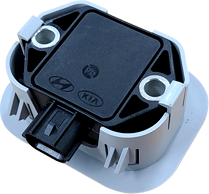
- Hydrogen Sensor
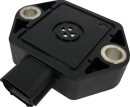
- Metal Bipolar Plate

- Water Trap Ass'y
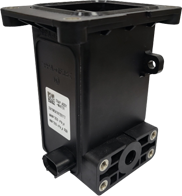
- Level Sensor

- Hydrogen Exhaust System
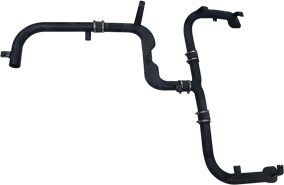
- Pressure-Temperature Sensor
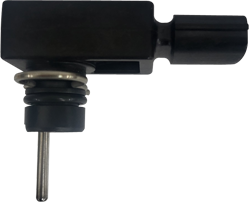

-

Hydrogen Sensor
(Catalyst Combustion Type)
Hydrogen Sensor
(CAN Interface)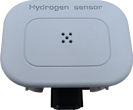
Hydrogen Sensor
(Indoor)
- Hydrogen Sensor
-
- A safety device that monitors the leakage of Hydrogen, the fuel of FCEV
- In case of Hydrogen leakage, a signal is generated for warning alarm operation and vehicle operation Shut-down
- Operating Principle : Catalyst Combustion Type, Thermally Conductive Type
- Analog and CAN(Controller Area Network) interfaces
-

- Water Trap Ass’y
-
- The function of storing and discharging condensate generated at the Hydrogen electrode of the fuel cell stack
- When the water level sensor detects condensate in the housing, it sends a signal to the drain valve to drain the water
- Capacitive Water Level Measurement
-

- Pressure-Temperature Sensor
-
- A function to measure pressure and temperature by being mounted on the coolant CTV
- Consists of MEMS Pressure Sensor + NTC Probe
-

- Level Sensor
-
- In the case of liquid Hydrogen, it is impossible to measure the level by the conventional floating method due to its low density and cryogenic temperature(-253℃ or less)
- Because it exists in the liquid/gas phase complex form in the tank, it is impossible to measure the amount of fuel through pressure like the existing hydrogen storage system
- Applying a capacitive level sensor to measure the liquid level inside the tank
-

- Metal Bipolar Plate
-
- The metal separator constitutes a stack together with the membrane electrode assembly(MEA) and the gas diffusion layer(GDL)
- The role of uniformly supplying the reaction gas, hydrogen and air, to the MEA and transferring the current generated by the electrochemical reaction
-
- Hydrogen Exhaust System
-
- The role of a passage for external discharge of fuel cell stack operating fluids (air, steam, hydrogen, water)
- Guide to the rear of the vehicle to prevent misunderstanding of fire due to exhaust steam
- Reduction of flow noise of stack exhaust air
- Separate discharge of water condensate in the exhaust air to prevent pedestrians/drivers damage to the rear of the vehicle
Electric Mobility
Changes faithful to the basics, SJG SEJONG challenging together
We are trying to find strategic items and improve core competenciesto convert to new businesses that prepare for the future.
- EXV Valve
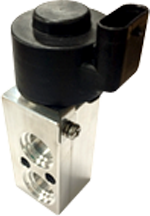
- SBW Actuator
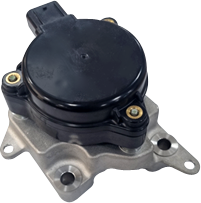
- Pressure-Temperature Sensor
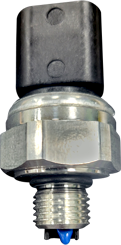
- Door pop-up Actuator
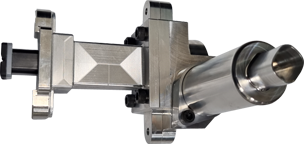
- Wheel Speed Sensor
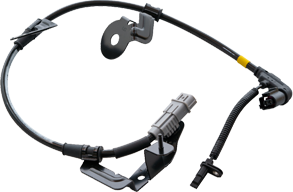
- Integrated Charging Control Unit
- Battery System
- Chassis Module
- Power Electric System
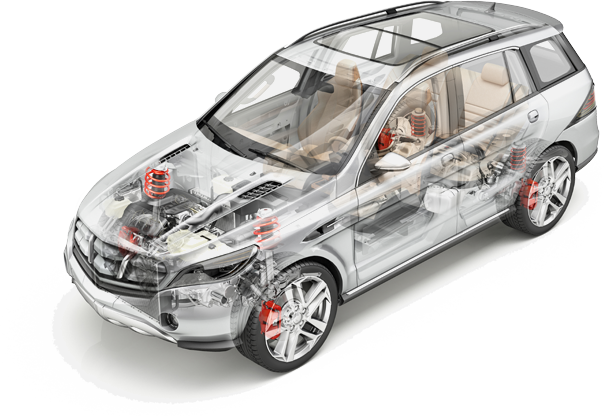
-

- EXV Valve (Electronic Expansion Valve)
-
- Refrigerant flow control for eco-friendly vehicle battery temperature control
- Stepping Motor applied opening degree 3.75˚
- Efficient temperature management for active control
-

- SBW Actuator (Shift By Wire Actuator)
-
- Used to convert an existing mechanical shift lever into an electronic one
- BLDC motor and reduction gear are applied to electrically rotate the motor and reduction gear
- Shift the detent position of the automatic transmission to P-R-N-D
-

- Pressure-Temp. Sensor
-
- The purpose of precise control of the air conditioning
part of the thermal management system by measuring
pressure and temperature - System packaging simplification and cost/weight
reduction through integrated sensor development
- The purpose of precise control of the air conditioning
-

- Door Pop up Actuator
-
- Application of automatic opening/closing system through electronic system
- Aiming for a low-end model through cost reduction rather than a high-end model
-

- Wheel Speed Sensor
-
- Convert the rotation (physical signal) of the vehicle wheel to voltage or current (electrical signal) and pass it to the ECU control unit
- IC chip embedded in HEAD unit to output signal
-
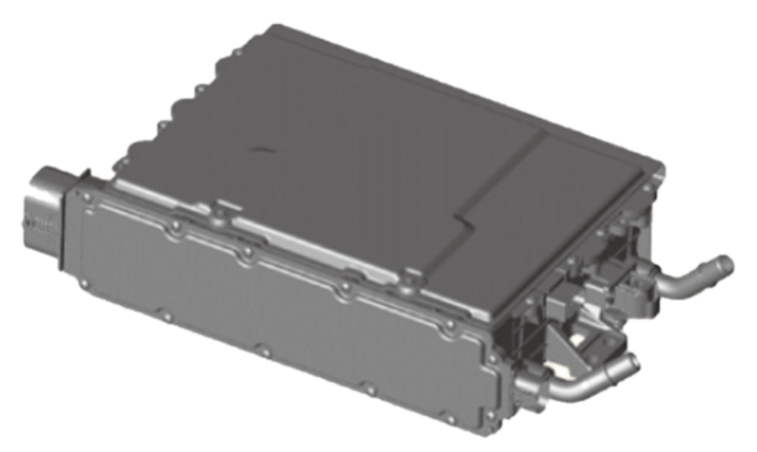
- ICCU (Integrated Charging Control Unit)
-
- ICCU combines an OBC function and a LDC function
- OBC (On Board Charger) : OBC converts AC power to DC power to charge the high voltage battery
- LDC (Low Voltage DC DC Converter) : LDC converts high voltage to low voltage DC power to charge the secondary battery
Internal Combustion Parts
we are creating an exhaust system to help reduce air pollution and improve fuel efficiency.
Internal Combustion Parts
- Exhaust System

- Resonator
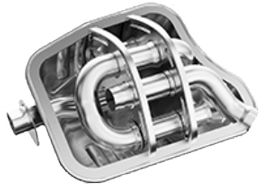
- Active Valve Assembly
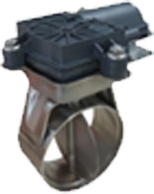
- Exhaust Heat Recovery System
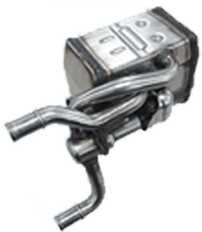
- Exhaust Aftertreatment System
-
- Gasoline-Engine
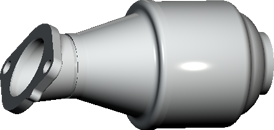
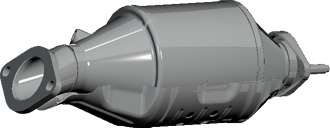
-
- Diesel-Engine
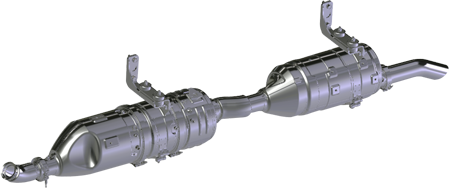
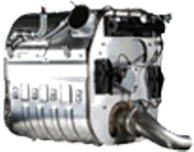
- Exhaust Aftertreatment System
-
- Gasoline-Engine
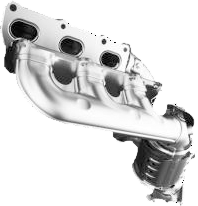
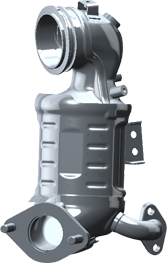
-
- Diesel-Engine
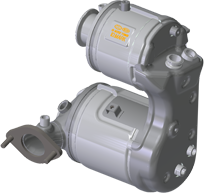
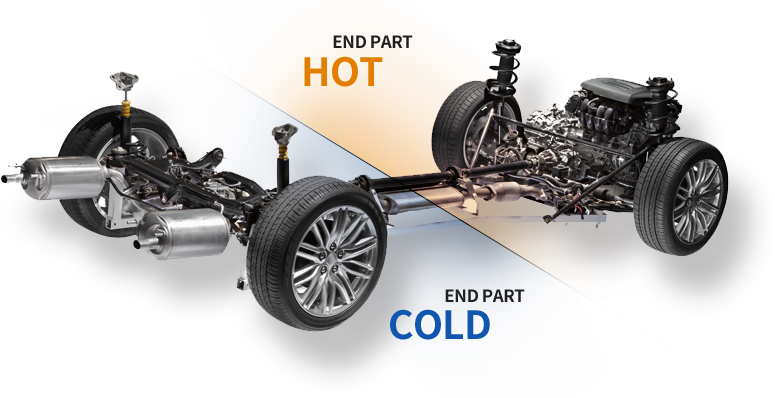
-
Gasoline-Engine

- MCC (Manifold Catalytic Converter)
-
-
As the assembly of Exhaust manifold and Catalytic converter,
Exhasut gas with harmful substances(CO, HC, NOX) from engine is converted into the gas with harmless ones(H2O, CO2, N2) by redox reaction in that and thrown out to the air
-
-
Gasoline-Engine

- WCC (Warm-up Catalytic Converter)
-
-
As the Catalytic converter device, Exhasut gas with harmful
substances(CO, HC, NOX) from engine is converted into the gas
with harmless ones(H2O, CO2, N2) by redox reaction in that
-
-
Gasoline-Engine

- UCC (Under floor Catalytic converter)
-
-
As the Catalytic converter device, Exhasut gas with harmful
substances(CO, HC, NOX) from engine is converted into the gas
with harmless ones(H2O, CO2, N2) by redox reaction in that
-
-
Gasoline-Engine

- GPF (Gasoline Particulate Filter trap)
-
-
It is a device with a built-in physical trap filter that collects particulate
matter (PM) of gasoline. It converts exhaust gas containing harmful
substances (CO, HC, NOX) into harmless substances (H2O, CO2, N2)
through redox reaction
-
-
Diesel-Engine
- DOC (Diesel Oxidation Catalytic)
-
- It is a device to reduce oxidizing hydrocarbon and carbon monoxide in exhaust gas by redox reaction and Soluble Organic Fraction in particulate matter, too
- DPF (Diesel Particulate Filter trap)
-
- It is a trap filter device to collects and purifies fine soot and particulate matter of exhaust gas by redox reaction
- SCR (Selective Catalytic Reduction)
-
-
Colorless and odorless urea water is injected into the exhaust gas to generate ammonia (NH3), a reducing agent. This reducing agent is stored in the SCR catalyst and purifies the nitrogen oxides (NOX) in the exhaust gas into harmless nitrogen (N2)
-
- AOC (Ammonia Oxidation Catalytic)
-
-
It is a catalyst or device that converts unreduced residual ammonia (NH3) into harmless nitrogen (N2) instead of harmful nitrogen oxide (NOX) in SCR device
-
-

- Exhaust System
-
- Hot exhaust gas is induced through the exhaust pipe and discharged to the outside by lowering the temperature
- Reduction of nitrogen oxides and particulate matter in engine combustion gases
-

- Exhaust Heat Recovery System
-
- Used to improve vehicle fuel efficiency due to high oil prices and environmental regulations
- Reduce engine warm-up time and improves heating performance by recycling exhaust heat emitted to the outside
-

- Resonator
-
- Reduce high pressure noise from engine combustion
- Reduce noise by optimizing the structure in the Resonator using the expansion/reflection/sound absorption principle
-

- Active Valve Assembly
-
- Control engine power and noise by opening and closing the valve from the vehicle's ECU signal
- Used to reduce exhaust flow noise and tune sporty sound

